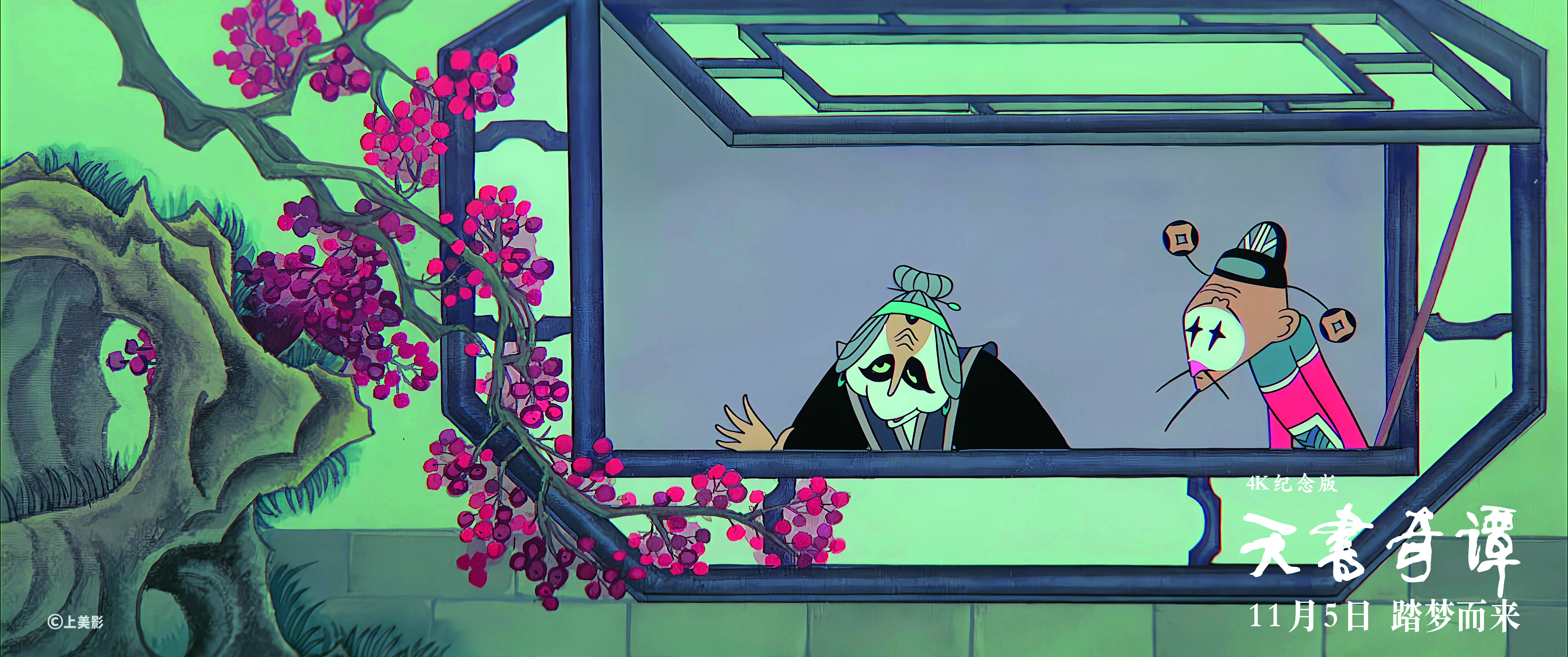Tracing the Rise of Chinese Animation

Pause (1923)
It is considered the curtain-raiser on the development of modern Chinese animation.
Pause is the earliest known Chinese animated short film. Unfortunately, no video of this animation has been preserved. Pictured is Yang Zuotao, the producer of Pause. Photo courtesy of Kongzang Animation & Comics Archive
The Camel’s Dance (1935)
It is China’s first animation with sound.
The Camel’s Dance, produced by the Wan brothers, is a narrative about an attention-seeking camel: The camel thinks he knows everything and dances in public at a banquet of animals. He ends up making a fool of himself and getting kicked off stage. The animated film completely solved problems hindering the synthesis of light, picture, and sound in animation. From that point on, Chinese animation entered the era of sound. Photo courtesy of Kongzang Animation & Comics Archive
Princess Iron Fan (1941)
It is China’s first animated feature.
Princess Iron Fan, also created by the Wan brothers, was adapted from the story of the Monkey King borrowing the Palm-leaf Fan from Princess Iron Fan in the classical Chinese novel Journey to the West. The art design of the film absorbed the traits of makeups in traditional Chinese operas and brought Chinese landscape paintings to life on the screen. The film, also released in Japan and Southeast Asia, became an instant hit at home and abroad. Photo courtesy of Kongzang Animation & Comics Archive
Crow Black-Coated(1955)
It is China’s first color animated film.
In the early 1950s, Chinese animators began producing movies in color, and Crow Black-Coated became the first success. In 1956, the film was submitted to the 8th Venice International Children’s Film Festival in Italy and won the grand prize. However, at first the judges mistakenly thought it was a Soviet animation. In the early days of the People’s Republic of China after its founding in 1949, people in many sectors looked to Soviet experience for reference, including Chinese animators. Subsequently, many Chinese animation practitioners began self-reflection and called for “exploring a national style of animation,” which began an exploratory course for Chinese animation.
Photo from Douban
Little Tadpoles Looking for Their Mother (1961)
It is China’s first ink-and-wash animated film.
Little Tadpoles Looking for Their Mother is a groundbreaking work marking the creation of China’s unique ink-and-wash animation. It also marked the formation of a national style of Chinese animation. The film won many international awards and successfully sealed the status of the “Chinese school” of animation on the global stage. Photo courtesy of Kongzang Animation & Comics Archive
Havoc in Heaven (1964)
It is China’s first full-color animated feature film as well as the most influential Chinese animation in the world.
Havoc in Heaven, adapted from the novel Journey to the West, stunned domestic and foreign animation circles after its release. The animated film was screened at 18 international film festivals and won many awards. It was exported to 44 countries and regions and is still regarded as a classic of Chinese hand-painted 2D animation today. Photo from Douban
The Legend of Sealed Book (1983)
It marked a pioneering effort in the modern transformation of Chinese animation.
The Legend of Sealed Book is an animated feature film adapted from the classical Chinese novel The Three Sui Quash the Demons’ Revolt.
The film broke through the long-standing model of rote following of the content of traditional literature by injecting the modern artistic characteristics of entertainment, humor, and carnival in its narrative. It is a pioneer of the modernization of Chinese animation. Photo from Douban
Lotus Lantern (1999)
The animated film redefined the production system of Chinese animation.
Lotus Lantern was adapted from an ancient Chinese myth about how Chenxiang saved his mother.
The animated film became a huge success when it premiered. It adopted international standards of production and strengthened promotion to the point of organizing a complete marketing system offering VCDs, video tapes, and licensed stationery products and toys. The practice effectively improved the industrial chain of China’s animation market. Photo from Douban
Monkey King: Hero Is Back (2015), Big Fish & Begonia (2016), Nezha (2019), and more
The past decade has witnessed vigorous development of China’s animation industry.
Over the past more than 10 years, 30 to 40 Chinese animated features have been released yearly, boosting the development of “national-style animation.” Key works include Kuiba (2011), record-breaking Monkey King: Hero Is Back (2015), national blockbuster Big Fish & Begonia (2016), The Legend of Hei (2019) which swept across Asia, China’s current highest-grossing animated film Nezha (2019), and Deep Sea (2023) that represents the pinnacle of animation technology in China. Today, Chinese animation is entering a golden age.
Photo from Douban